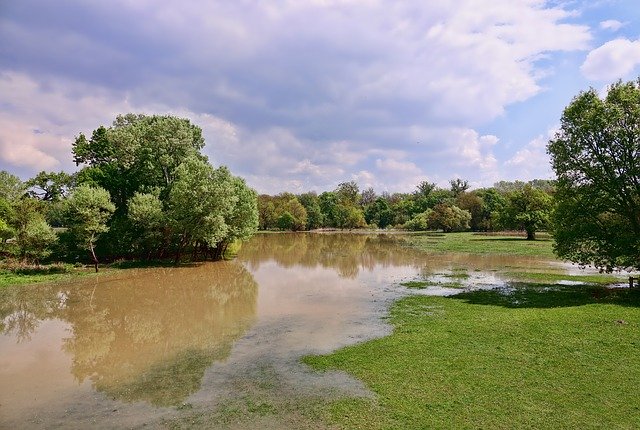
Over the last few weeks, we've had yellow weather warning over large swathes of the UK and flooding has been a major problem!
Public transport has been disrupted, rivers have burst their banks and hundreds of homes have been affected. This is a stressful time for homeowners affected by the floods who will be left to try and pick up the pieces as we move into spring/summer.
While many of you won't be at the point of taking remedial action just yet, it's helpful to know the steps you need to take to start reclaiming your flooded garden when the rain starts to subside.
1. Assessing the Damage
If your home has been hit badly by the floods, your garden might be completely submerged. If this is the case, it's possible that the turf underneath has died.
With large bodies of water sat on top of the soil, you can also expect a reasonable amount of compaction that will need to be addressed when the water clears. If you can, try to assess your flooded garden without walking across it too much. Walking on the flooded soil will compact it further, and could be a hazard to you. With severe flooding, you can't tell how much debris is in the water, so always proceed with caution and wait until the flooding has started to subside before venturing out.
2. Removing the Debris
As the floodwater starts to drain away, you can start the cleanup process. First of all, you need to grab your wellies, put on some gloves and waterproofs and carefully walk out into your garden to gather any debris that's been deposited on the lawn. The area could have been contaminated with anything from broken glass to sharp sticks or household items.
It's at this point that you'll be able to see if there are any garden plants that can be recovered! If so, carefully dig them up and move them into a fresh pot where they can dry out for a while before being re-planted in the garden later down the line.
3. Levelling Out the Land
If your lawn has become uneven due to flooding, it's possible that you'll have to remove the top layer of soil completely to level it back out. If the top layer of your lawn has died then this might not be the worst idea anyway, it will allow you to start with a fresh patch and work on achieving a better lawn than ever before.
4. Aeration and Top Dressing
Once your lawn has been stripped back to the bare earth, it's time to start preparing the ground for new grass. This should start with a heavy dose of aeration and top dressing. Aerating the soil will alleviate the compaction caused by the flooding while the fresh topsoil will add nutrients back into the ground ready for your new lawn.
Here at Lawn and Weed Expert, we use a special grass aeration machine that moves across the surface of the lawn and punches tiny holes in the ground. This helps surface water to drain away easily. We also tailor your top dressing to suit your garden, so don't hesitate to get in touch if you're working through the aftermath of your flooded garden.
5. Laying New Turf or Planting Grass Seed
Now that the ground has been dried out, aerated and treated with top soil, you can choose one of two methods to re-plant your lawn.
Firstly, you could choose to lay turf from scratch. This is by far the quickest route to a new lawn! We've been laying turf for over 20 years and can help give you back the garden you deserve in no time at all.
Secondly, you could choose to re-seed your lawn. This involves planting grass seed and waiting for the lawn to grow through in its own time. We offer an overseeding service that will help get your flooded garden on the mend.
Remember to take into consideration the possibility of a flood in the future when you're fixing your flooded lawn. If you live in a flood-prone area, we might be able to make some recommendations that will help prevent another garden flooding disaster in the future. If you'd like a quote for any of the services listed above, don't hesitate to request a free lawn survey.
Request a Free Lawn Survey >